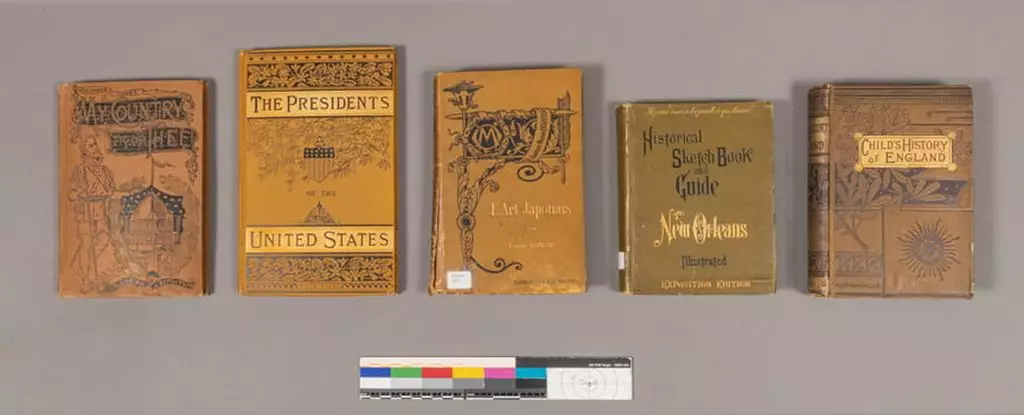The allure of Victorian-era cloth-bound books lies not only in the stories they contain but in their vivid and captivating hues. However, a recent analysis has uncovered a disturbing truth – these very dyes that once made these books so visually appealing may pose a toxic threat to readers. Lead and chromium, known for their harmful effects on health, have been found in the pages of these antique books. The presence of such heavy metals raises concerns about the potential risks associated with handling these books, especially for individuals who come into frequent contact with them such as librarians and book dealers.
During the 19th century, a new era of dyes emerged, revolutionizing the textile industry with their vibrant colors. Arsenic, aniline, and other heavy metals were instrumental in creating the brilliant greens, magentas, blacks, and purples that adorned fabrics and book covers. While these dyes added a touch of luxury to Victorian aesthetics, they came at a grave cost. Countless lives, particularly those of factory workers, were claimed by the toxic effects of these substances. The Poison Book Project, initiated by art conservationists, shed light on the prevalence of these toxic dyes in vintage books worldwide, highlighting the need for awareness and caution.
In response to the alarming findings of the Poison Book Project, researchers at Lipscomb University embarked on a mission to investigate the presence of toxic dyes in their library’s collection. Through a series of rigorous tests, including X-ray fluorescence, inductively coupled plasma optical emission spectroscopy, and X-ray diffraction, the team uncovered the alarming truth – lead and chromium were present in unsafe concentrations in several samples. The discovery of lead(II) chromate, a pigment notorious for its use in artworks like Van Gogh’s Sunflowers, further emphasized the potential risks associated with these antique books.
Implications for Safety
The implications of these findings are significant, signaling a potential health hazard for individuals exposed to these toxic dyes. With concentrations surpassing CDC’s limits for acceptable exposure, the urgency to address this issue and protect both readers and collectors is paramount. The decision to seal the affected books in plastic and remove them from circulation underscores the seriousness of the situation. As researchers delve deeper into identifying the specific dyes responsible for the high metal concentrations, the broader implications of this discovery are beginning to unravel.
The uncovering of toxic dyes in antique books serves as a poignant reminder of the importance of safety standards and environmental awareness. What was once deemed safe and fashionable in previous generations now poses a significant risk to our health. As we navigate the complexities of preserving historical artifacts while ensuring public safety, the need for continued research and vigilance in identifying potential hazards remains crucial. The team’s presentation of their findings at the American Chemical Society’s Fall meeting sheds light on an overlooked issue that demands immediate attention and action.



Leave a Reply